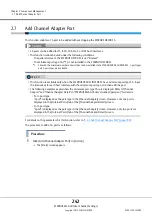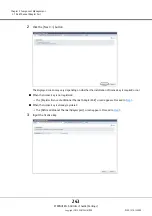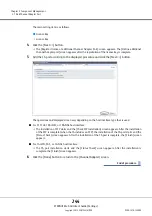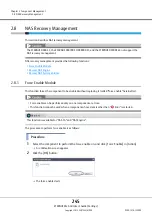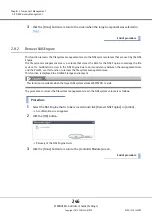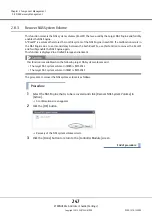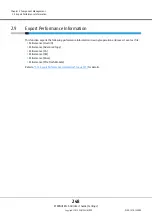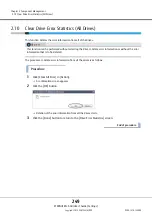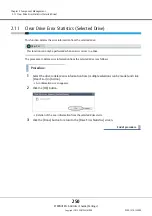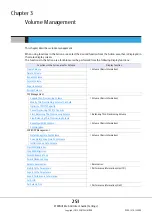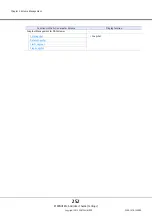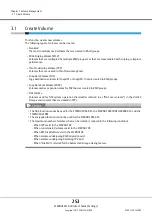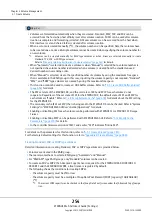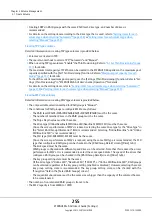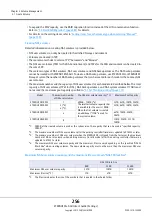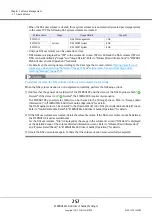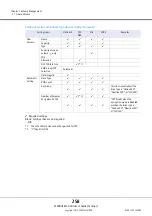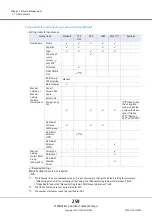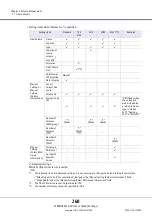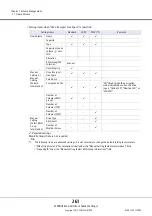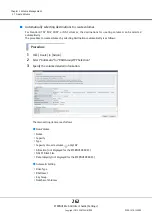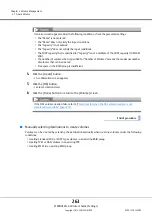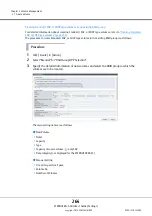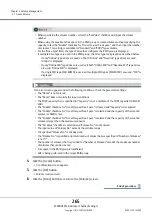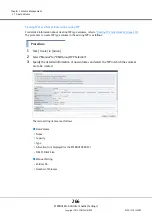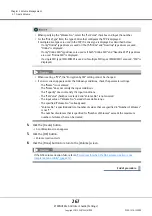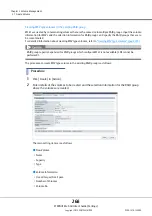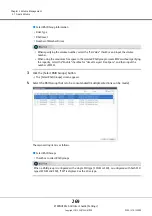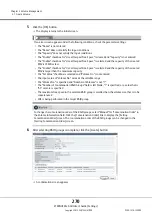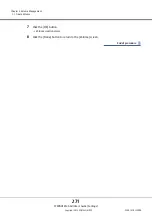
Chapter 3 Volume Management
3.1 Create Volume
ETERNUS Web GUI User’s Guide (Settings)
Copyright 2015 FUJITSU LIMITED
P2X0-1270-13ENZ0
256
•
To expand the WSV capacity, use the RAID migration function instead of the LUN concatenation function.
Refer to
"3.9 Start RAID Migration" (page 301)
for details.
•
For details on the setting items, refer to
"Setting items for each volume type when selecting "Manual""
Creating NAS volumes
Detailed information on creating NAS volumes is provided below.
•
NAS user volumes can only be created in the Unified Storage environment.
•
Volumes are created in TPP.
•
There are two methods to select a TPP; "Automatic" and "Manual".
•
The NAS user volumes (TPVs for the NAS environment) and TPVs for the SAN environment can be created in
the same TPP.
•
There are two types of NAS volumes; NAS user volumes and NAS backup volumes. The NAS backup volume
cannot be created with ETERNUS Web GUI. To create a NAS backup volume, use ETERNUS CLI or ETERNUS SF
Storage Cruiser. The number of NAS backup volumes that can be created for each model is the same as NAS
user volumes.
•
The maximum number and the capacity of NAS user volumes for each model are described below. The total
capacity of NAS user volumes (TPVs for NAS), NAS backup volumes, and NAS system volumes (17GB) must
not exceed the maximum pool capacity specified in
"6.1 Set Thin Provisioning" (page 557)
.
*1:
300GB of the created volume is used as the system area. The capacity that can be used is "specified capacity -
300GB".
*2:
The maximum number of NAS user volumes after the existing controller firmware is updated to V10L33 or later.
*3:
The maximum number of NAS user volumes when the ETERNUS DX is shipped from the factory or the maximum
number of NAS user volumes when adding memory (in cold mode) after the existing controller firmware is
updated to V10L33 or later.
*4:
The maximum NAS user volume capacity and the maximum file size vary depending on the specified "NAS FS
Block Size" when creating volumes. The new volume capacity must not be more than the maximum NAS user
volume capacity.
Maximum NAS user volume capacity and the maximum file size of each "NAS FS Block Size"
*5:
The file size indicates the size of the user data that is created in the shared folder.
Model
The maximum number
of NAS user volumes
The NAS user volume capacity (*1)
Maximum Pool Capacity
ETERNUS DX100 S3
1
400GB - 128TB (*4)
The smallest volume capacity that
is available for the user is 100GB.
When the first volume is created,
an additional "17GB" is used for
the system volume.
32TB, 64TB, 128TB, 256TB
ETERNUS DX200 S3
2 (*2)
4 (*3)
32TB, 64TB, 128TB, 256TB
ETERNUS DX500 S3
4
64TB, 128TB, 256TB,
384TB
ETERNUS DX600 S3
8
128TB, 256TB, 512TB,
768TB
NAS FS Block Size
8KB
32KB
256KB
Maximum NAS user volume capacity
32TB
128TB
128TB
Maximum file size (*5)
1TB
4TB
32TB
Summary of Contents for Eternus DX200F
Page 2: ...This page is intentionally left blank ...
Page 1082: ......

